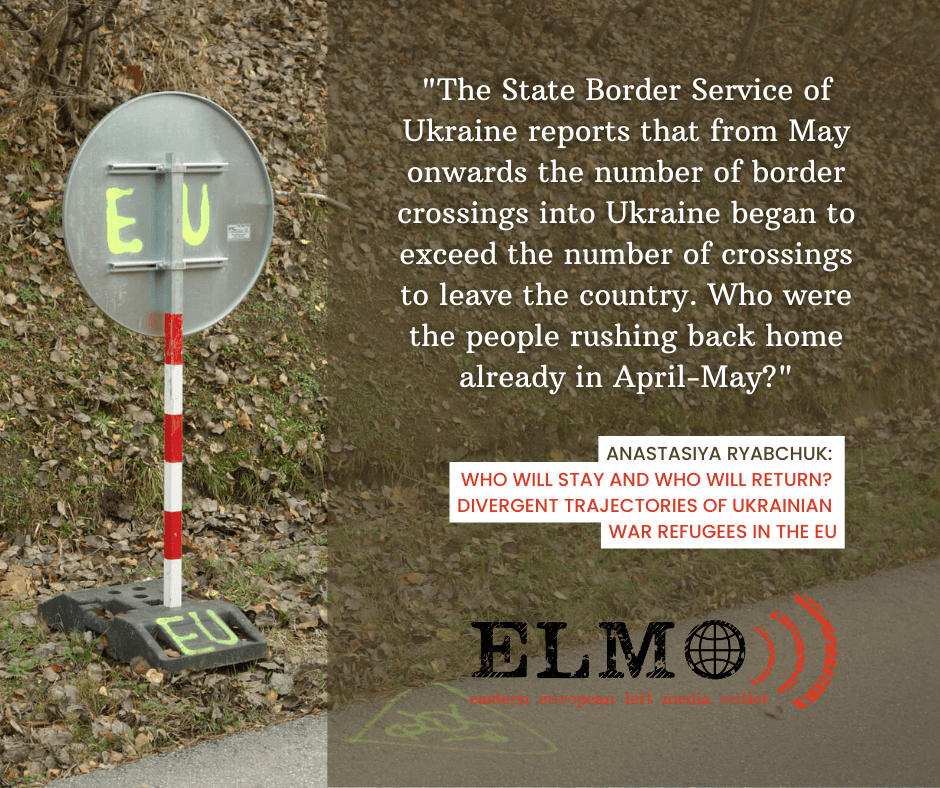
This article is part of the multilingual ELMO series Transnational migration in CEE from intersectional perspectives of race, gender, class and citizenship
Russia’s full-scale invasion of Ukraine on February 24, 2022, took most Ukrainians by surprise. Many thought it was some kind of misunderstanding that could be resolved by political leaders’ negotiations within a matter of days or weeks. People fleeing their hometowns often had the intention of “waiting for things to settle down,” and very few Ukrainians thought that the war could last a year or longer. Among those who left Ukraine, most waited for a couple of weeks before reaching this decision.[1] By May, even as negotiations failed and the war dragged on, , many Ukrainians who fled abroad began returning home, just as Russian troops’ retreated from Kyiv and the northern regions of Ukraine. The State Border Service of Ukraine reports that from May onwards the number of border crossings into Ukraine began to exceed the number of crossings to leave the country. Who were the people rushing back home already in April-May? Who were those that remained hesitant? Will there be a new wave of migrants and refugees this winter, since Russia began targeting civilian electricity infrastructure?
In this article, I argue that the expected duration of the war is crucial in determining the migration patterns of Ukrainian refugees in the EU, and also in determining the divergent trajectories of migrants and refugees themselves. The classical migration theories that consider “push-and-pull” factors at home and in the receiving countries are of course still relevant. However, the question of time needs to be weaved into this narrative. Especially when considering Ukrainian migrants’ “temporary protection status” in the EU, with a higher chance of returning home “as soon as the war ends,” unlike refugee status that presupposes a more long-term break with home countries scarred by wars.
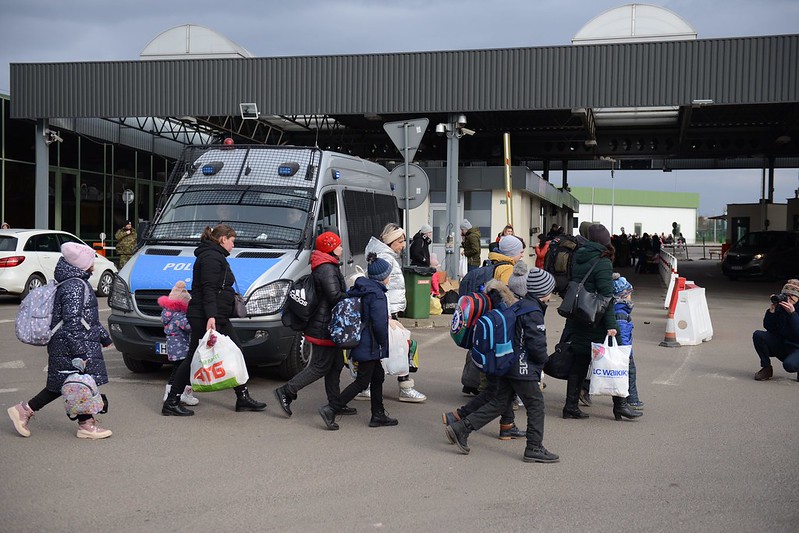
Hopes and expectations of Ukrainian refugees between spring and autumn 2022
About two thirds of refugees left Ukraine in March (84% by the end of April), and only as little as 15% of Ukrainians left their country from May onwards[2]. Almost half of respondents interviewed in May by Kyiv International Institute of Sociology (KIIS), believed that the war would end in the nearest six months, and only 18% felt it could last longer: 11% gave an indication of 6 to 12 months, and 7% more than a year[3].
By September, the certainty of a quick end to war was slowly vanishing. A vast majority of Ukrainians still believed in Ukraine’s eventual victory and in Ukraine’s prosperous future as a member of the EU. KIIS in its survey conducted on September 7-13, 2022[4] asked whether a person would consider emigrating to the EU or USA if they were offered unconditional citizenship rights. Compared to 2020 the percentage of those who responded positively decreased by four times, from 28% to 7% (even if one considers that part of those who would have responded positively had already left since the start of Russian invasion, the difference would still remain twofold according to KIIS, thus a very significant decrease). InfoSapiens conducted an omnibus study on August 12-18[5] that showed an increase in feeling proud of being Ukrainian (98% compared to 41% in 2002 and 69% in 2020). This survey also showed that a vast majority of 95% is optimistic about the future of Ukraine, and 92% are optimistic about their own future in Ukraine. The percentage of those who would not agree to Ukraine’s territorial losses in the name of peace, remained high and even increased by a few points: from 84% in May to 87% in September[6]. An overwhelming majority (86%[7]) felt that Ukraine should keep resisting even in face of Russian massive terrorist attacks on the electricity network in October 2022, with grave risks of full blackouts and a collapse of the entire electric grid, heating and sanitation networks.
This hope however was much weaker when asked about the expected duration of war: the KIIS study quoted above, found that in September the percentage of those who felt war could end in the nearest six months fell to 28 percent, while the percentage of those who thought it would last longer nearly doubled, to 34%, with 16% giving an indication of 6-12 months, and another 18% thinking it would last for more than a year. In fact, Russian attacks on the electricity network that began in October, may lead to a new wave of Ukrainian refugees to the EU. NGOs working with Ukrainian refugees in neighboring countries have reported sometimes a tenfold increase by the end of October, as in the case of Zahony border crossing to Hungary that currently witnesses between 300 and 500 new cases daily, compared to less than fifty in the summer months[8]. Even several of Ukraine’s high-ranking government officials encouraged those Ukrainians who can go abroad for winter to do so, and those who are currently abroad, to postpone their return until spring 2023.
“Push and pull” factors of migration
Out of the 4.5 million Ukrainian refugees who received temporary protection status in the EU, more than 80% are women, and two-thirds have children[9]. At the same time, among those Ukrainians who are returning to Ukraine, only one third are with children (UNHCR research at the border with those returning to Ukraine, carried out on April 3-27). This is quite expected: mothers with children are more hesitant to return to Ukraine while the war is still ongoing, fearing for children’s safety. Younger single people who feel they will be able to adapt to the new war-reality, as well as the elderly, who find it difficult abroad and miss their homes, are more likely to return at this stage.
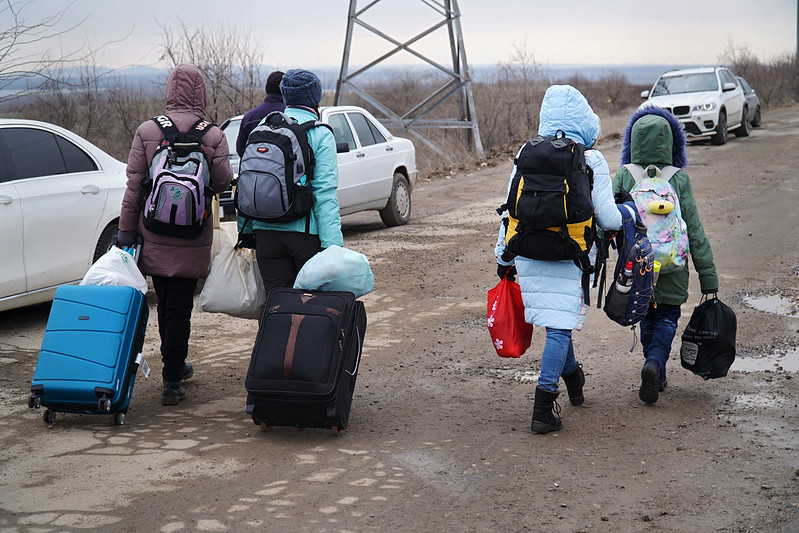
Razumkov center research carried out in spring showed that 79% of migrants wanted to return home ‘as soon as the war ends’. But at the same time, Work.ua study showed that 59% of Ukrainian refugees were already searching for employment under temporary protection status. Of course, the latter figure could be due to insufficient support in the hosting countries, and not necessarily mean that the Ukrainian refugees want to stay longer, but at least in the short-run these 59% chose to integrate rather than return back home. KIIS for CASE Ukraine study carried out on May 3-18, found that only 42,9% Ukrainians envisage their children’s future in Ukraine in case of a prolonged war. In case of a ceasefire and a peace treaty being signed in the near future, this number grows to 54,7%.Women in this study had higher safety demands than men.
Concerns of mothers are obviously not only about bombing, but also whether the schools and preschools will reopen, whether children can have a “normal childhood”. Because of women’s greater involvement into reproductive labour, they are more acutely aware of all the things that should be functioning to live with a child: schools, shops and pharmacies, clinics, wifi connection, uninterrupted water and electricity supply… In my daughter’s elementary school in the centre of Kyiv, two-thirds of parents who took part in a survey in June about planned return to school on September 1, responded positively. But as a result, out of a class of 20, only one child attends school offline, another 3 attend online from other parts in Ukraine, and the rest currently attends abroad. Some were frightened by Russia’s nuclear terrorism in August, others by an extensive list of what to pack in an emergency backpack, in case a child remains blocked in the school basement for up to three days after shelling.
At the same time, difficulties in securing childcare and lack of family support in case of family separation may push women to return even to a context that is not perceived as safe. With older children and youth there is also a possibility of the mother’s return while the child remains in the EU. Several boarding schools offer 24/7 care for Ukrainian youth, and private boarding schools that target specifically Ukrainian refugee children, were created this school year.
In May, UNHCR carried out research at the border in Zakarpattia region about reasons for Ukrainian refugees’ return home. One third indicated reunification with family as the main reason, and another third – perception of safety in the area of return (particularly for Northern regions and Kyiv). We can classify these responses as “pulling back home” factors. At the same time, although less prevalent, there were also “pushing out of EU” factors: no housing/ difficulty finding housing in the receiving country (5%), or lack of employment opportunities in the receiving country (among those returning to Kyiv this was the reason for 5% – even during war, Kyiv could offer some people better working conditions than EU countries). The role of these factors may grow over time. Firstly, people may be more willing to accept inadequate living conditions in reception centres in the short-term, but not in long-term perspective. And secondly, the social benefits offered to Ukrainian refugees in the first weeks and months are being drastically reduced, which makes survival without full time employment more difficult.
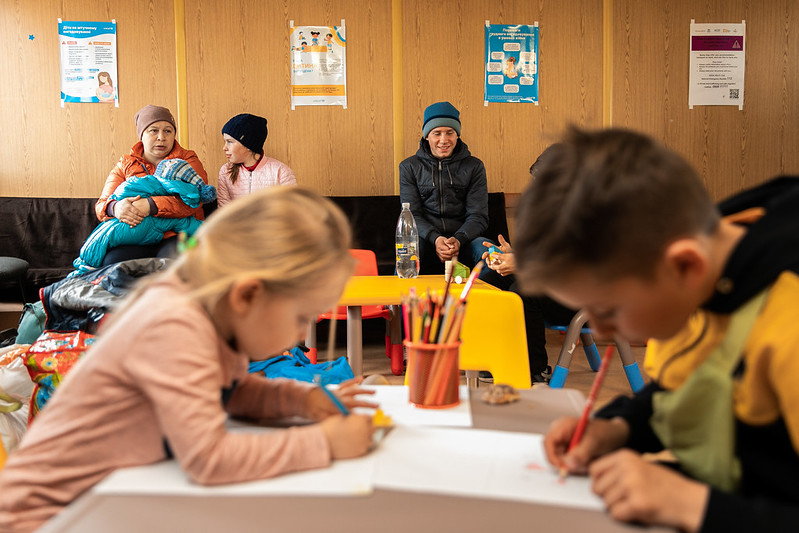
For instance, France, one of the most generous countries, initially offered 420 euro per month per adult in social payments, free transportation by rail, and free accommodation in hotels. At the beginning of May, however, it canceled free transport and began evacuating residents from hotels by offering them three alternative housing options (offers were often in rural distant areas, and in case of refusal of the third offer, no further offers were made). Most recently in October French social payments were reduced in half, keeping the second half only for those who can prove they are paying rent. France also limits the validity of temporary protection documents to 6 months, and the first wave of Ukrainian refugees already had to renew their status this September.
The social class dimension of migration
Such changes have at least two immediate effects. Firstly, they “filter out” Ukrainian refugees into the more or less “desirable” – further integrating those who managed to find employment and housing, but limiting social benefits to all others, thus forcing some of them to return home. Secondly, they make it more difficult for the newly arriving refugees – who are often a more vulnerable subcategory than the first wave. Research shows that the first ones to leave were people who were better off economically and had more social and cultural capital to consider moving abroad. First wave of migrants was more likely to have personal savings to cover basic needs while waiting for temporary protection applications to be processed. A UNHCR survey of 34145 Ukrainian refugees found that 12% of them had relatives in receiving countries, and that 56% already managed to find private housing for rent (although 29% were still in reception centres and this figure is higher for the newly arriving refugees). They were more likely to have private vehicles (so could leave the country in the first days of war), some prior contacts in receiving countries – either personal or professional, knowledge of at least one foreign language, higher education, etc. Razumkov centre study found a higher percentage of managers (14% compared to 1.5% of Ukrainian population as a whole) and private entrepreneurs (14% compared to 4% of Ukrainian population as a whole), with a further 12% self-identifying as skilled workers, and another 11% as housewives. Thus, those who left Ukraine often have a higher socio-economic status compared to those who remained. They are also more likely to come from urban areas (nine in ten respondents in Razumkov study) and have higher education (86% have either completed or were in the process of obtaining higher education). Those who made the decision to leave at a later point in time, were more likely forced to do so by a deteriorating safety situation, loss or damage to their homes, and other “push out of Ukraine” factors, with “pull into EU factors” playing a less significant role.
Safety concerns were the main “push out of Ukraine” factor, while living standards acted as a “pull into EU” factor (temporary protection and other benefits). But the opposite dynamic works as well – improving safety perception at home can be a “pull into Ukraine” factor, while difficulties in securing an adequate standard of life as a “push out of EU“/ return to Ukraine factor.
“Pull into EU factors” may be dominant for more vulnerable groups who require special assistance: EU has better healthcare, facilities for special needs children, better provisions for people with chronic illnesses and life-threatening diseases like cancer. “Pull into EU factors” may also dominate for youth without a family of their own and without a permanent need to care for family members in Ukraine (university students, single people). They see economic support of family members who remain in Ukraine as a valuable contribution and a reason to remain in the EU (“I can’t be with my parents, but I can send them money and help them in this way”). Furthermore, the decision to stay is stronger, if the family unit remained intact, as in cases where the father was able to join wife and children in the EU (cases of 3+ children, children with disabilities, or if father left the country prior to Feb.24) or cases where grandparents were able to settle with their children to help out with household and childcare duties.
“Push back to Ukraine factors” on the other hand, are often related to the negative first experience: bureaucracy that takes too long, difficulties in finding a job, housing, securing childcare. Difficulties in finding a job involve not only barriers to employment – no knowledge of local languages, need to confirm skills/qualifications, unwillingness to accept “humiliating” offers (i.e. farm work for urban middle class migrants), but also in some cases better employment prospects in Ukraine. For instance, the Razumkov centre survey of Ukrainian refugees found that almost 60% of them only have enough resources to buy food and basic inexpensive clothing and housing items, and another 12% can barely make ends meet, compared to 11% and 2% respectively back in Ukraine. 42% of respondents had problems finding a job, 32% – housing for rent, with a further 21,5% lacking any housing, and 15% claiming uncomfortable housing conditions.
They are aggravated by problems securing childcare needs: cases where preschools only accept children if mothers are employed, or where one needs to have a permanent address before applying for a place at a preschool, where working hours don’t correspond to hours of schools and preschools, or where school fees are unaffordable (esp. in nurseries for young children. 14% of Ukrainian refugees from the Razumkov study had difficulties in securing children’s education, and 13,5% – in securing their leisure and after-school activities. Not only schools and nurseries operating hours, but also those of bureaucratic institutions, shops, pharmacies, etc. often overlap with working hours, so a single mother cannot secure her household’s needs, look after the children, and keep a job. A study of mothers with preschool age children found that lack of childcare options was the main barrier to finding employment, limited refugees choice of a place of residence, and was more likely to push some of the refugees back to Ukraine. Social ties are much more limited in hosting societies, whereas in Ukraine other family members or social networks can be of help. And there are also emotional and psychological difficulties: understanding how the system operates in Ukraine (“like a fish in the water”) vs needing to figure everything out from scratch that takes up time and resources (“fish taken out of the water”).
“As soon as the war ends”: divergent trajectories dependent on the duration of war
As noted above, a vast majority of Ukrainian refugees initially expressed a desire to return home: 4Service survey carried out between 28 March and 4 April 2022[10] found that more than two thirds wanted to return either as soon as it is safe again in their home region (36%) or “as soon as the war ends” (35%). Another 13% planned to return within a year or two after the end of war, and 7% if their enterprise would resume operation or if they had a definite job prospect back home. On the two extremes were the 11% that were planning to return in the nearest future, and 7% who did not envisage their return at all. This survey found that among those who already had permanent employment in the EU, 18% did not envisage a return – and this could be one of the most important indicators that will change over time. As time goes by, the EU may be faced with an increasing polarization among Ukrainian refugees. On the one hand will be those who integrated fully into the labour market, secured private housing, integrated children into local schools, and who will be welcome to remain in the EU even when the temporary protection scheme is over. Even today, in the 4Service groups study, among those who do not intend to return, we see a higher proportion of some specific profiles: those who were considering emigration to the EU even prior to the war (54%), single youth under 35 who are reaching that decision only for themselves personally (and not for the entire household), and those who are fluent in one or several European languages (64%).
On the other hand we may find the more desperate group of refugees who simply have nowhere to return to with destroyed homes, lack of employment prospects, poor social provisions in post-war Ukraine to vulnerable groups such as the elderly and people with disabilities. Out of the 81% of the respondents were employed prior to the war, only 11% had confidence that they could return to their jobs, with a further 34% hoping that this would be possible. At the same time, 12% were hoping to find a different job, while 36% do not know whether they will be able to find any employment at all.
We may also observe a growing gap in receiving countries’ capacities to accommodate refugees, as the more educated middle-class refugees will migrate further west to countries with better provisions. We already see this trend with further migration from Poland to Germany: although initially Poland hosted the bulk of refugees due to its physical and cultural proximity to Ukraine, by autumn, the number of refugees in Germany grew to 800,000. Many in this group had initially settled in Poland and only moved to Germany later for better levels of social protection. Similarly, Bulgaria reported almost half a million Ukrainians entering their country, but only one in ten chose to stay and obtain temporary protection, with the remaining 90% continuing their journey to other countries. There is a tendency to stop on the way for a few months to explore options of further migration: facebook groups of Ukrainian refugees in neighbouring countries often have discussions of “where can we have better provisions?”, “what is the situation like for refugees in France, Spain, Netherlands, etc?” Compared to those who stay in the first country of entry, those who choose to migrate further are likely to be more motivated and focused – having done their “research” of where they can receive better protection, knowing more clearly where exactly they are going, what they can count on etc.
As for the regional dimension on the Ukrainian side, already from the first days of war there were regional differences, and these differences too will aggravate over time. The 4Service group survey quoted above showed that while one in five refugees from Western regions were planning to return in the nearest future, only 6% of refugees from Eastern and Southern regions claimed this – and for them it was mostly an intention to return to a different part of Ukraine than their homes. There are also slight regional differences in willingness to end the war through negotiations even if it would mean territorial losses: although even in Eastern and Southern regions a vast majority responds that Ukraine should keep resisting militarily, but this percentage is somewhat lower than the national average (69% vs 88%), and percentage of those who would agree to negotiations and ceasefire is higher (29% vs 8%). The immediate horrors of war that were witnessed by much higher numbers of people from these regions may turn into another growing gap in experiences of war over time.
New divisions, new solidarities? Concluding remarks
It is thus clear that different migration patterns and choices, as well as different starting points, create new divisions among Ukrainian refugees. The dynamic of push-and-pull factors also changes over time: in the hope of a quick end to war, people tend to notice the positive aspects of returning home (family reunification, familiar social and cultural context, more stable housing arrangements, and in some cases also employment) and negative experiences abroad (such as insufficient protection and unfamiliar social and cultural context), but as this hope of a quick end vanishes, the motivations also change. Class distinctions between more mobile and confident middle-class refugees, and more vulnerable groups with fewer options, may also become more pronounced.
Sociologists also observe differing attitudes of those Ukrainians who remained in the country, towards those who fled war. A split-sample experiment carried out by KIIS in September[11] showed that although the attitude towards all groups of Ukrainian refugees is generally positive (90% of respondents expressed understanding, and only 5% condemnation of refugees’ decision), there are nonetheless some differences based on gender and family status of refugees. In the case of a mother with underage children, whose husband remained in Ukraine, 90% are supportive, and 6% condemn their decision, for single young women without children the support drops to 87% and condemnation rises to 9%, for elderly men (a 72-year old professor) support drops even further to 83% and condemnation rises to 10%. And predictably, support is lowest in the case of a “31-year old male labour-migrant who was in Poland when war broke out, and decided to stay there” (75% supportive vs 19% who condemn his choice). The divergent experiences of different groups of migrants and differing perceptions of these migrants at home, may end up as significant barriers to post-war reconstruction of Ukraine and formation of unifying social narratives that would be capable of bridging these gaps and forging solidarities.
Read the article in CEE languages on ELMO member platforms:
- in Ukrainian on Spilne/Commons
- in Romanian on Platzforma and Gazeta de Artă Politică
- in Hungarian on Mérce
- in Serbo-Croatian Mašina and Radnička prava
- in Bulgarian on Baricada Bulgaria and dVersia
[1] 52% of respondents of 4Service group study of Ukrainian refugees waited for a few weeks before reaching the decision to leave Ukraine, with another third leaving even later in March and April.
[2] Опитування проводилося соціологічною службою Центру Разумкова з 20 липня по 25 серпня 2022 року. Респонденти відбиралися методом «снігової кулі» та через розміщення звернень стосовно участі в опитуванні у Facebook-групах, що об’єднують представників української спільноти та біженців в різних країнах (методом «self selected sample»). Були опитані 511 біженців у 30 країнах. Найбільше серед опитаних біженців, що перебували на території Польщі (110 осіб) та Німеччини (85 осіб). 231 особа була опитана в інших країнах Європейського Союзу, 63 особи — в країнах поза ЄС (Молдова, Туреччина, Швейцарія, Велика Британія, США, Ізраїль).
[3] https://www.rbc.ua/rus/news/ukrayintsi-sprognozuvali-skilki-trivatime-1663671399.html
[4] https://www.kiis.com.ua/?lang=ukr&cat=reports&id=1136&page=1. There were no significant regional differences. In 2020 the highest number of those who’d like to emigrate was among young people 18-29 years old (46%) and in 2022 it fell to 13%
[5] https://www.sapiens.com.ua/ua/publication-single-page?id=241
[6] https://www.kiis.com.ua/?lang=ukr&cat=reports&id=1133&page=1
[7] https://glavcom.ua/country/society/chi-varto-prodovzhuvati-borotbu-proti-rf-jakshcho-obstrili-trivatimut-opituvannja-kmis–884305.html
[8] https://www.reuters.com/world/europe/east-europeans-prepare-possible-new-ukrainian-refugee-wave-winter-nears-2022-11-09/
[9] INTERSOS Rapid Protection Monitoring Assessment (Korczowa UA-PL border crossing, 9-28 March), 88,4% of displaced people were women. 69,3% of displaced women have school aged children.
[10] 4Service Group interviewed 3027 refugees in 36 countries https://4service.group/ukrayinski-bizhentsi-v-yevropi-doslidzhennya-povedinki-ta-nastroyiv-ukrayintsiv-shho-vimusheni-buli-viyihali-v-yevropu-vnaslidok-vijni-v-ukrayini/
[11] https://kiis.com.ua/?lang=ukr&cat=reports&id=1160&page=1
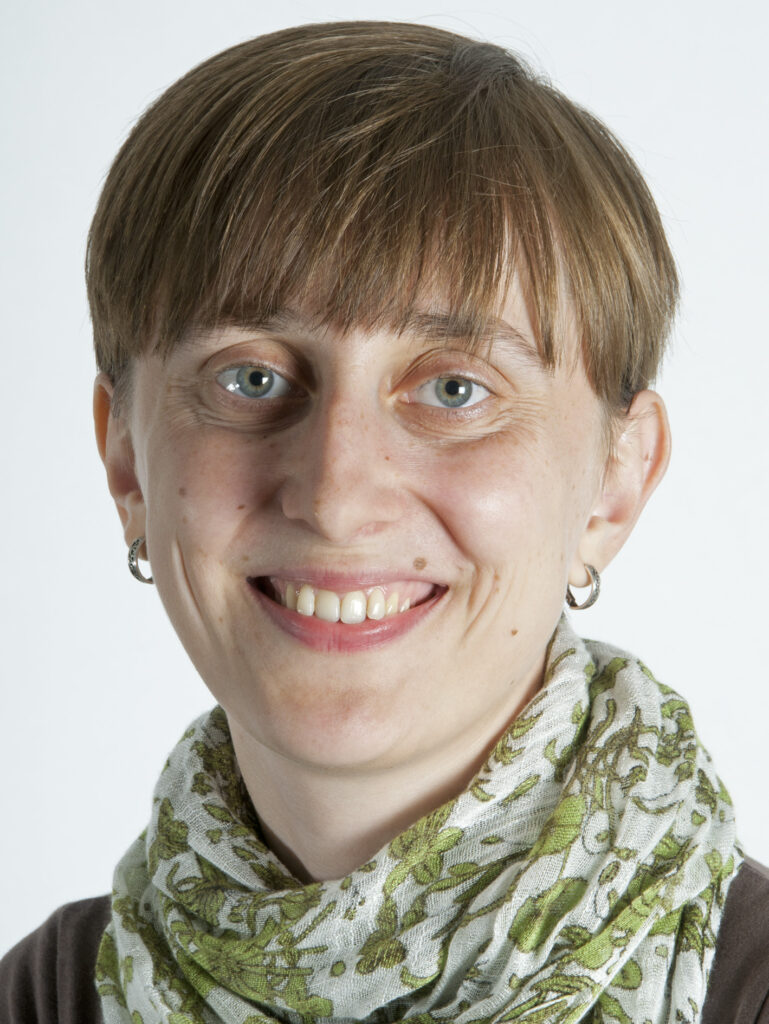
Anastasiya Ryabchuk is Associate Professor in Sociology at the National University of Kyiv-Mohyla Academy (Ukraine), and a PAUSE scholar-at-risk at INALCO (Paris). Her research interests include homelessness, poverty and urban marginality, and infrastructural vulnerabilities in frontline communities of the Donbas region. She is currently a refugee in France with her 7-year old daughter.
